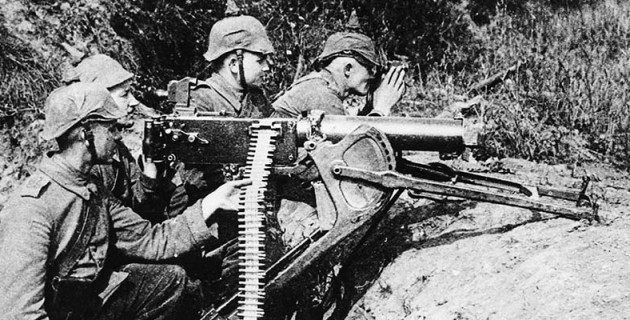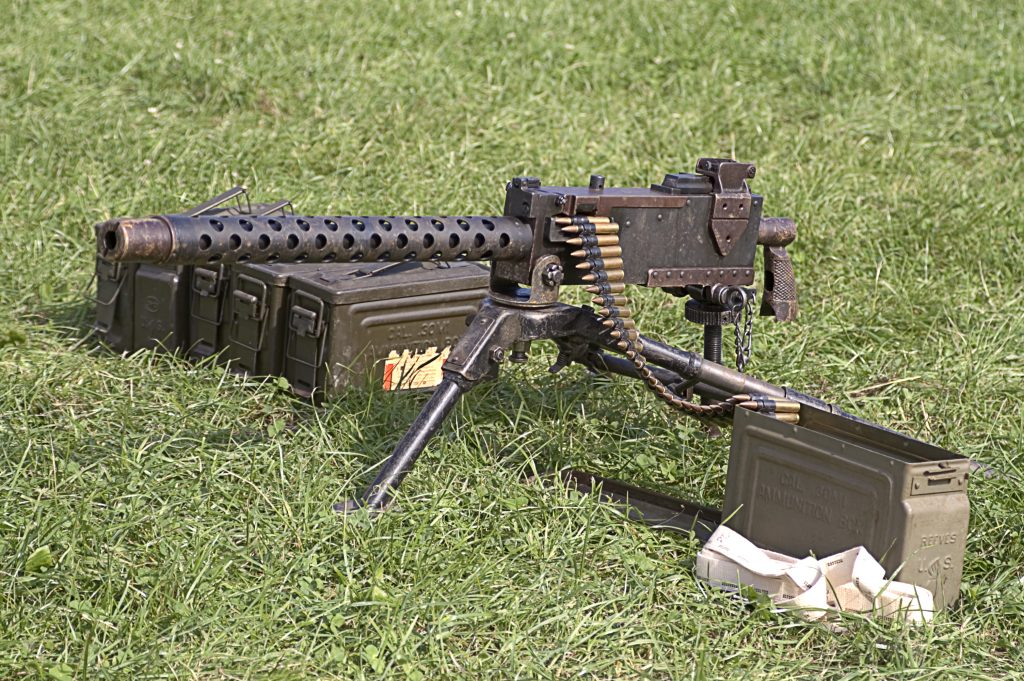Depending upon the gunner and conditions, a barrel change might be required as often as every 200 to 250 rounds. When the hot barrel was eliminated, it was set aside till it was cool enough to use again. Machine-gun groups would have as many as 6 extra barrels on hand.
Driving through a just recently protected area in Belgium, the observant Liniewski found the deserted weapon in a field. Liniewski then did what any without supervision GI would have done in that position; he stopped his truck and took the opportunity to snag an excellent memento for the folks back house. As a support soldier, Liniewski was not familiar enough with weapons to dismantle his MG-42, so he hung on to it for a while up until he discovered a camp where German prisoners of war were being held.
The weapon remained in the Liniewski family up until 2016 when his son Marty contributed the weapon to the Museum. In spite of its propensity to get too hot, the MG-42 was an outstanding weapon that was light-years of ahead of the United States counterpart, the Browning M-1919A4 gatling gun. Germany produced roughly 400,000 MG-42s throughout the war, a few of which are still in active service.

Taken together, all these weapons provided the Red Army a more practical variety of assistance weapons, better able to challenge the Germans for fire superiority on the battlefield. Totally illustrated, this study explains the innovation and the strategies of these gatling gun. Kept in mind authority Chris Mc, Nab sets out how these gatling gun were distributed and tactically used and offers numerous examples of the weapons in action, from attack teams on the streets of Stalingrad to tank crews having a hard time for survival at Kursk.
See This Report on Did The Germans Use Lmgs During The First World War
Illustrated with high-quality photos and specifically commissioned artwork, this is a deep analysis of these necessary tools of warfare within the Soviet forces.
Taken together, all these weapons gave the Red Army a more useful variety of assistance weapons, better able to challenge the Germans for fire superiority on the battleground. Fully detailed, this research study discusses the innovation and the methods of these gatling gun. Noted authority Chris Mc, Nab sets out how these gatling gun were distributed and tactically used and supplies numerous examples of the weapons in action, from assault groups on the streets of Stalingrad to tank teams struggling for survival at Kursk.
Illustrated with high-quality photographs and specially commissioned art work, this is a deep analysis of these necessary tools of warfare within the Soviet forces.
The machine gun company, commanded by a captain, had an assigned strength of six commissioned officers and 172 enlisted men, and brought 16 weapons, four of which were spares. Within the business there were 3 squads and a head office area. A first lieutenant led the first squadron, while 2nd lieutenants led squadrons two and three.
Getting The 5 Deadliest Machine Guns Of World War I To Work


Within each area were two gun teams, each with one weapon and nine guys, led by corporals. The gun team had one combat cart, pulled by a mule, to transfer its gun and ammo as near the firing position as opponent fire permitted. From there the crews moved the guns and ammunition forward by hand.
It had only two companies, identical to the other device weapon business in terms of workers and weapons. Each gun team utilized an unique motor car to transport its personnel, weapon and equipment.
In this role the guns were put 300 to 1000 meters to the back of the front line. When they utilized their guns in that fashion, the device weapon officers frequently encountered opposition from the rifle business commanders, who preferred to have the guns farther forward, fearing that their infantrymen would be at danger of stray low rounds as they advanced under the overhead machine gun fire.
Furthermore, they quickly found that the maker weapons were high top priority targets for opponent fire, which it was helpful to have the guns at some distance from the infantry positions. Considering that enemy gatling gun postured the best danger to the attacking soldiers, the maker gun crews strove to find the enemy weapons and to focus their fire upon them.
What Does Weapons Used By The Australian Army In World War I Do?
A percentage of the guns was held back as a reserve under command of the maker gun officer. 6Machine weapon tactical teaching dictated that in the defense the Hotchkiss weapons need to only seldom lie within 100 yards of the cutting edge which at least two-thirds of the guns need to be echeloned back through the entire defensive position, situated so that surrounding guns would be equally supporting.

7 To find other features on the visit our THE DOUGHBOY CENTER wants to constantly expand this feature. Additions and talk about these pages might be directed to:.
I was impaled on this. My only fear was that he would press the trigger which would have made a hell of a mess. In the meantime, my sergeant who was near he saw me; came in close; shot the fellow and after that hoisted me, with the help of another man, off the bayonet.
A bayonet injury straight it goes in it hurts and the withdrawal is most likely even more anguish than the 'putting in' due to the fact that the 'putting in' is instant. Another type of weapon was the trench club.